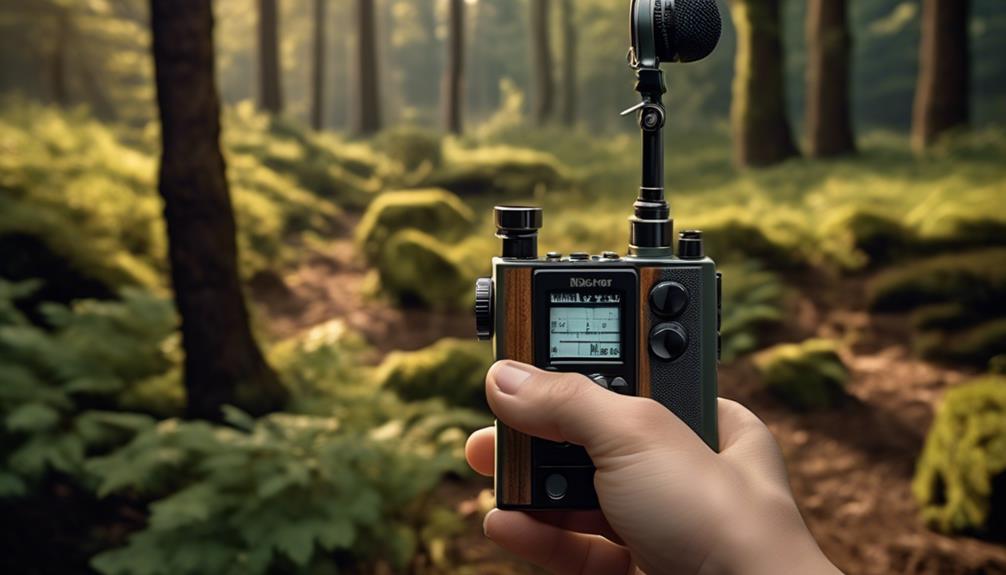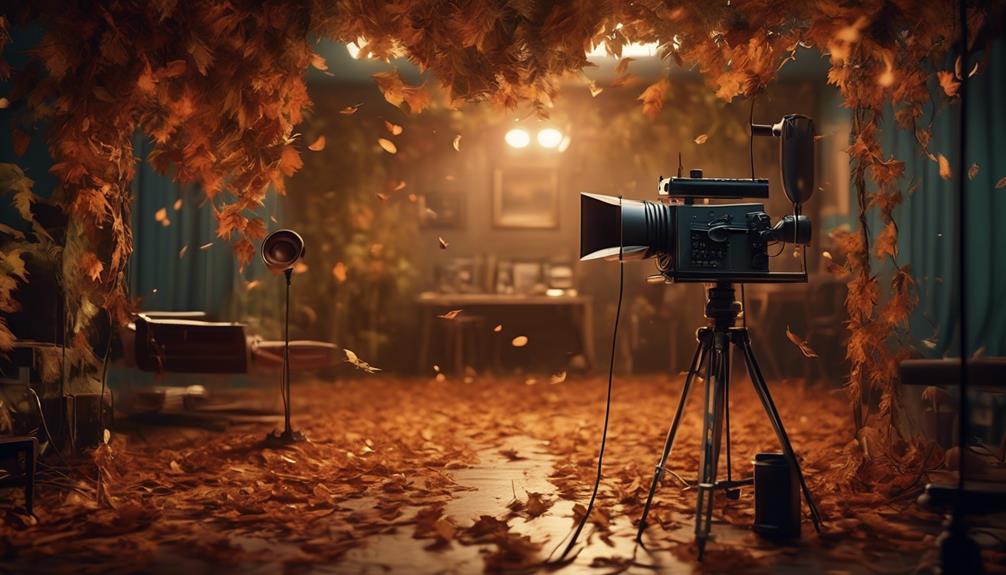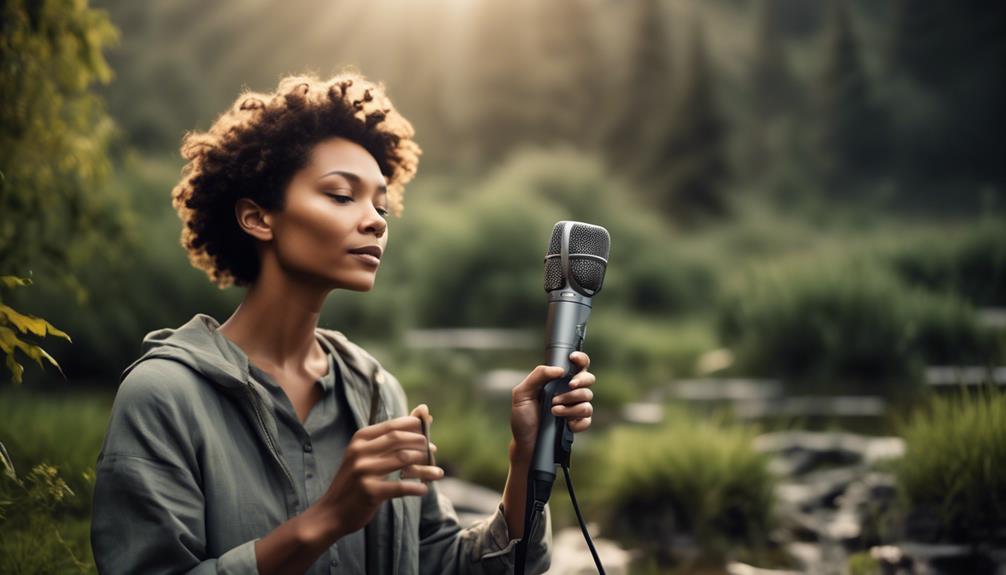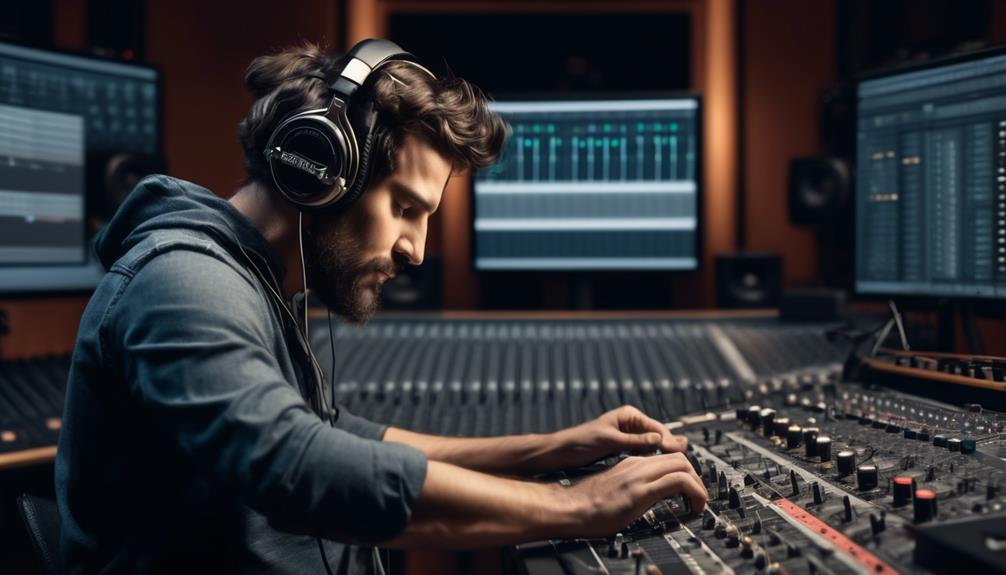When it comes to field recordings, choosing the proper equipment is comparable to searching for the ideal tool in a fully equipped workshop. There are countless options, ranging from lavalier microphones to shotgun mics, each offering its own unique advantages.
But how do we navigate this sea of choices and determine the best fit for our specific recording needs? Let's explore the various tools and techniques that professionals use to capture pristine audio in diverse environments, whether it's a bustling city street or the tranquil sounds of nature.
Key Takeaways
- When selecting a portable recorder for field recordings, consider factors such as battery life, recording formats, and compatibility with external microphones.
- Understanding the frequency response of built-in mics is crucial for capturing accurate representations of sound waves and ambient sounds.
- The capability to connect external microphones is invaluable for achieving professional-quality recordings in various conditions.
- Wind protection, such as windshields and foam covers, is critical to mitigate unwanted noise from environmental factors during outdoor field recordings.
Portable Recorders for Field Recordings
When selecting a portable recorder for field recordings, it's crucial to consider factors such as battery life, recording formats, and compatibility with external microphones.
The field recorder is a vital piece of field recording equipment, allowing us to capture high-quality audio in diverse environments. One popular device in this category is the Zoom H1n, renowned for its compact size and exceptional performance.
Built-in mics are a key feature of portable recorders, and understanding their frequency response is essential for capturing accurate representations of sound waves and ambient sounds. Additionally, the capability to connect external microphones is invaluable for achieving professional-quality recordings in various conditions.
Wind protection is also a critical consideration, as it helps to mitigate unwanted noise from environmental factors.
When venturing into the field, these devices offer the versatility and ruggedness necessary for capturing pristine audio, making them indispensable tools for professionals and enthusiasts alike.
Types of Microphones for Field Recording

Various types of microphones are commonly used for field recording, each offering specific features and advantages for capturing high-quality audio in diverse environments. When recording sounds in the field, it's crucial to choose the right microphone to ensure optimum results. Here are some popular types of microphones used for field recordings:
- Lavalier microphone: These are small and portable, making them ideal for on-the-go use. They can be easily plugged into a camera or voice recorder and are great for capturing speech when mounted on the person. However, they lack isolation from shocks and handling noise.
- Shotgun microphone: A popular choice for outdoor recording, shotgun microphones have a directional pickup pattern. They're usually pointed directly at the person speaking, providing clear sound without being in the shot. However, they require additional hardware like a boom pole for optimal use.
- Dynamic microphone: Suitable for recording anywhere, dynamic microphones offer improved sound quality compared to lav mics. They're often used by reporters during interviews and can capture a variety of sounds effectively. However, they aren't as convenient for run-and-gun outdoor recording.
- Digital recorder: Pocketable and easy to use, digital recorders provide convenience and portability. They're great for recording ambient sounds, but may not offer the best vocal sound quality. While expensive options are available, there are also budget-friendly alternatives.
Wind Protection for Outdoor Recording
Wind protection accessories play a crucial role in maintaining high-quality audio during outdoor field recordings. Windshields are essential for reducing wind noise and are available in various sizes to fit different microphone types. Foam covers provide additional wind protection, proving particularly useful in windy environments. These accessories are compatible with a range of microphones, ensuring versatility in outdoor recording setups.
Wind protection is of utmost importance as it prevents wind noise from obscuring the subject and causing difficulties in hearing the recording. For outdoor recording, especially in ambient and challenging conditions, wind protection is vital for capturing clean audio. Whether using shotgun microphones, field recorders, or other recording devices, ensuring adequate wind protection is crucial for maintaining the integrity of the audio.
In sound design and field recordings, wind protection plays a key role in ensuring the quality of the recorded audio, making it an essential consideration for anyone engaged in outdoor recording endeavors.
Tips and Tricks for Field Recording
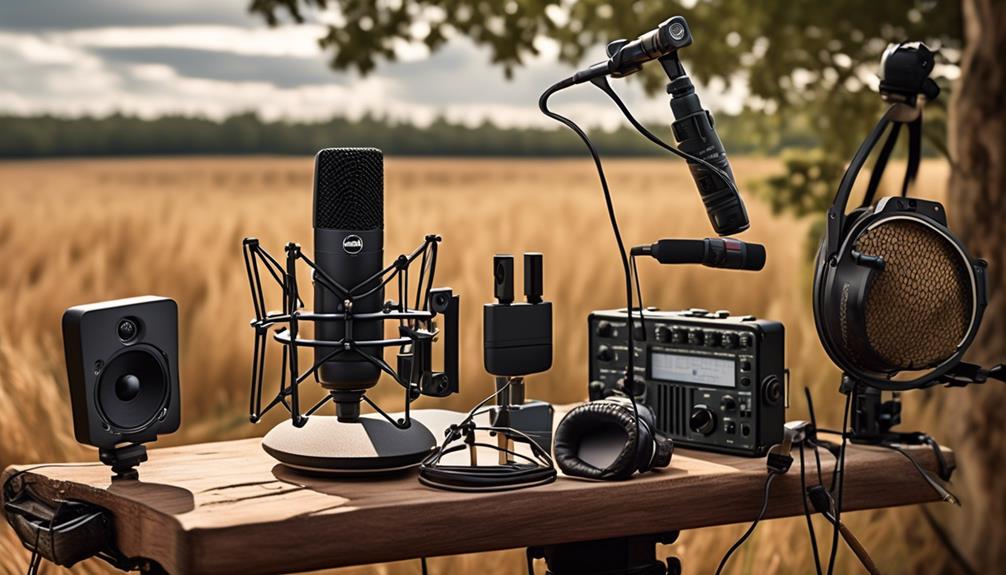
In the realm of field recording, mastering the art of capturing pristine audio amidst challenging environmental conditions requires a repertoire of tips and tricks to ensure optimal results.
When it comes to field recording, there are some essential tips and tricks that can significantly impact the quality of your recordings:
- Microphone Selection: Choose the right microphone for the job, whether it's a lavalier, shotgun, or dynamic microphone, each type has its own strengths and weaknesses that can affect the sound quality of your recordings.
- Wind Protection: Utilize windshields and proper microphone placement to minimize interference from wind, ensuring that your recordings are free from unwanted noise.
- Sound Monitoring: Use closed-backed headphones for sound monitoring during recording sessions to accurately capture sounds and adjust levels as needed.
- Post-Production Techniques: Incorporate post-production techniques to enhance the sound quality of your recordings, such as noise reduction and equalization, to achieve the best results.
Essential Field Recording Equipment
Selecting the appropriate portable digital recorder is crucial for ensuring convenience and high-quality audio results in field recording. A reliable choice is the Sound Devices MixPre6 II, offering exceptional audio quality, XLR inputs, and low self-noise. Another popular option is the Zoom H5, known for its versatility and portability. For capturing ambisonic recordings, the Zoom H3-VR is a top choice, providing a 4-capsule mic array and onboard A-B decoding. When it comes to microphones, the Audio Technica AT875R shotgun mic is a favorite among field recordists, offering a narrow acceptance angle and natural sound. Lavalier microphones like the Audio Technica ATR3350 are ideal for on-the-go use, providing clear speech capture. Dynamic microphones such as the Electro-Voice RE50B offer improved sound quality and are suitable for various recording environments. To process and edit recordings, software like Adobe Audition is essential for its advanced editing and mixing capabilities. Incorporating these essential equipment into your field recording setup will ensure professional and high-quality results.
| Equipment | Description |
|---|---|
| Sound Devices MixPre6 II | Exceptional audio quality, XLR inputs, low self-noise |
| Zoom H5 | Versatile and portable digital recorder |
| Audio Technica AT875R | Shotgun microphone with a narrow acceptance angle |
| Audio Technica ATR3350 | Lavalier microphone for on-the-go use |
Frequently Asked Questions
What Do You Need for Field Recording?
For successful field recordings, we need essential equipment like lavalier, shotgun, and dynamic microphones, digital recorders, windshields, and dead cats. These help combat environmental challenges such as wind noise and wildlife sounds.
Recording techniques, including proper microphone positioning and gain settings, are crucial for capturing quality audio.
Additionally, a portable setup and audio editing tools are necessary for remote locations and adverse weather conditions to ensure optimal sound quality.
What Is a Field Audio Recorder?
Field audio recorders are portable devices equipped with preamps and versatile input options to connect various microphones, ensuring flexibility for field recording needs. They feature user-friendly interfaces for quick recordings and offer wind protection accessories. Compatible with different memory cards and rechargeable batteries, they ensure long-term use in the field.
These recorders are essential for capturing clean audio in windy environments, ideal for nature sound recording and other outdoor audio needs.
What Is Field Work Recording?
When it comes to field recording, we prioritize capturing the essence of:
- Nature sounds
- Urban environments
- Wildlife noises
- Environmental ambiance
Our approach involves using top-notch recording equipment to ensure high-quality audio capturing in remote locations and natural landscapes. We're passionate about exploring soundscapes in outdoor acoustics, which requires meticulous attention to detail and expertise in navigating the complexities of field work recording.
Do I Need a Field Recorder?
Yes, we need a field recorder for professional field recordings.
While smartphones are cost-effective, they lack the audio quality and versatility of a dedicated recorder.
Utilizing an external microphone, adjusting settings, and addressing environmental challenges are essential for quality recordings.
Additionally, portable power sources, storage solutions, editing software, and soundproofing techniques further enhance the recording process.
Ultimately, a field recorder offers the necessary tools for professional-grade recordings, distinguishing them from amateur efforts.
Conclusion
In conclusion, field recordings are like capturing a moment in time with a net, preserving the sounds of nature or human activity for future use.
With the right equipment, such as portable recorders and high-quality microphones, along with proper wind protection and some handy tips and tricks, the potential for creating immersive and captivating audio experiences is limitless.
So, grab your gear and start capturing the world around you!

